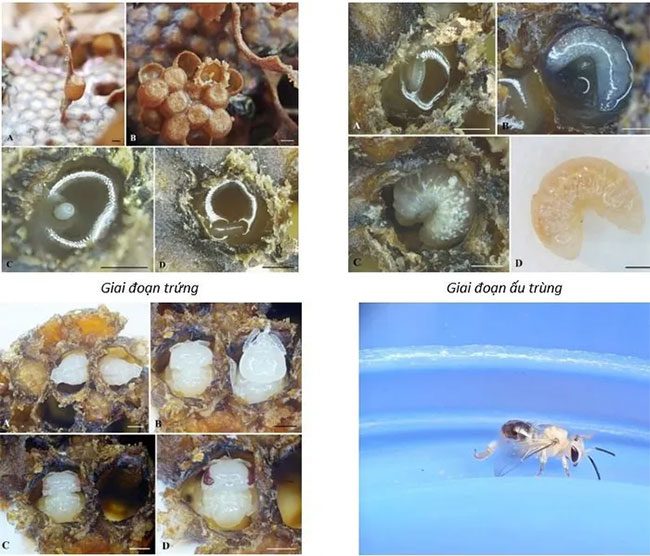Scientists at the Vietnam Academy of Science and Technology have discovered a species of honeybee with significant economic potential due to its superior honey quality.
The Economic Potential of the Stingless Bee Species
Master Tran Thi Ngat and her colleagues from the Institute of Ecology and Biological Resources, Vietnam Academy of Science and Technology, have recently identified a species of stingless bee that holds great promise for socio-economic development.
According to Master Tran Thi Ngat, honeybee species play a vital role in the pollination process and have garnered significant attention from scientists worldwide.
Research shows that over 20,000 species of bees from 7 families have been discovered globally. While many species exist with a rich variety, there are still some with very few species and limited biological information, including the stingless bee group.
Stingless bees are the smallest social bee group that produces honey and belong to the Apidae family. In Vietnam, scientists have searched for and identified 10 species of stingless bees from 4 genera.

Development stages of the Lepidotrigona flavibasis species.
The products (honey, pollen, and propolis) created by this group of bees have many applications in medicine. However, no studies have yet been conducted on the structure of the nests or the morphology of their developmental stages to aid in the domestication and development of this bee species.
Master Tran Thi Ngat and her team have compiled a list of lesser-known honeybee species in several provinces in the Northwest and provided information on biological characteristics such as nest structure, developmental stages, and flight activities of economically promising stingless bees.
The team recorded a total of 18 bee species from 4 families: Apidae, Halictidae, Megachilidae, and Melittidae in the Northwest region. They also discovered 1 new subfamily (Noteriadina), 1 new genus (Ebaiotrigona), 2 new species (Bathanthidium paco and Noteriades hangkia), and 3 species newly recorded for Vietnam (Thrinchostoma sladeni, Anthidiellum carinatum, and Chelostoma aureocinctum); additionally, they identified 93 common species in the Northwest, including some with narrow distributions such as Bathanthidium paco in Hoa Binh, Thrinchostoma sladeni in Dien Bien, and Macropis hedini in Lao Cai.
Notably, the research identified 4 species of stingless bees with potential for harvesting products they produce, such as honey, pollen, and propolis. The species Lepidotrigona flavibasis and Tetragonula gressitti show greater potential than Ebaiotrigona carpenteri in terms of honey and pollen production.
Mechanisms for Producing High-Quality Honey
According to Master Tran Thi Ngat, the pollen and honey pots of the species E. carpenteri are very small, yielding minimal amounts of honey and pollen. In contrast, the adaptability in hives of the stingless bee colony Lepidotrigona flavibasis is better than that of Tetragonula gressitti, as the Lepidotrigona flavibasis colony thrives when transferred to a new hive, while the Tetragonula gressitti colony shows poor development and tends to decline.
Moreover, the honey of Lepidotrigona flavibasis is clear and bright yellow, while that of Tetragonula gressitti is dark brown. Globally, the honey from Lepidotrigona flavibasis is considered superior to that of Apis cerana and Apis dorsata. Thus, Lepidotrigona flavibasis is one of the species with significant potential for domestication, breeding, and development, aiming at commercial beekeeping for honey and pollen in the Northwest region.
Additionally, scientists have provided information on the nest structure and morphological developmental stages of the most promising stingless bee species (Lepidotrigona flavibasis) in the Northwest, laying the groundwork for its domestication and development.
Stingless bees are very easy and safe to raise. Honeybees may abandon their hives, but this behavior does not occur in stingless bees. The queen stingless bee remains in one place after laying eggs and does not return to flight. The taste of stingless bee honey is sweet, mild, and slightly sour, with a higher nutritional content than other types of honey, making it highly sought after.
The results of the scientific research and the products from the project contribute to the knowledge of biodiversity in the Northwest region of Vietnam, as well as provide a direction for the development of stingless bee species that can yield high economic returns. Furthermore, these results can serve as reference materials for teaching in the field of insect diversity.



















































